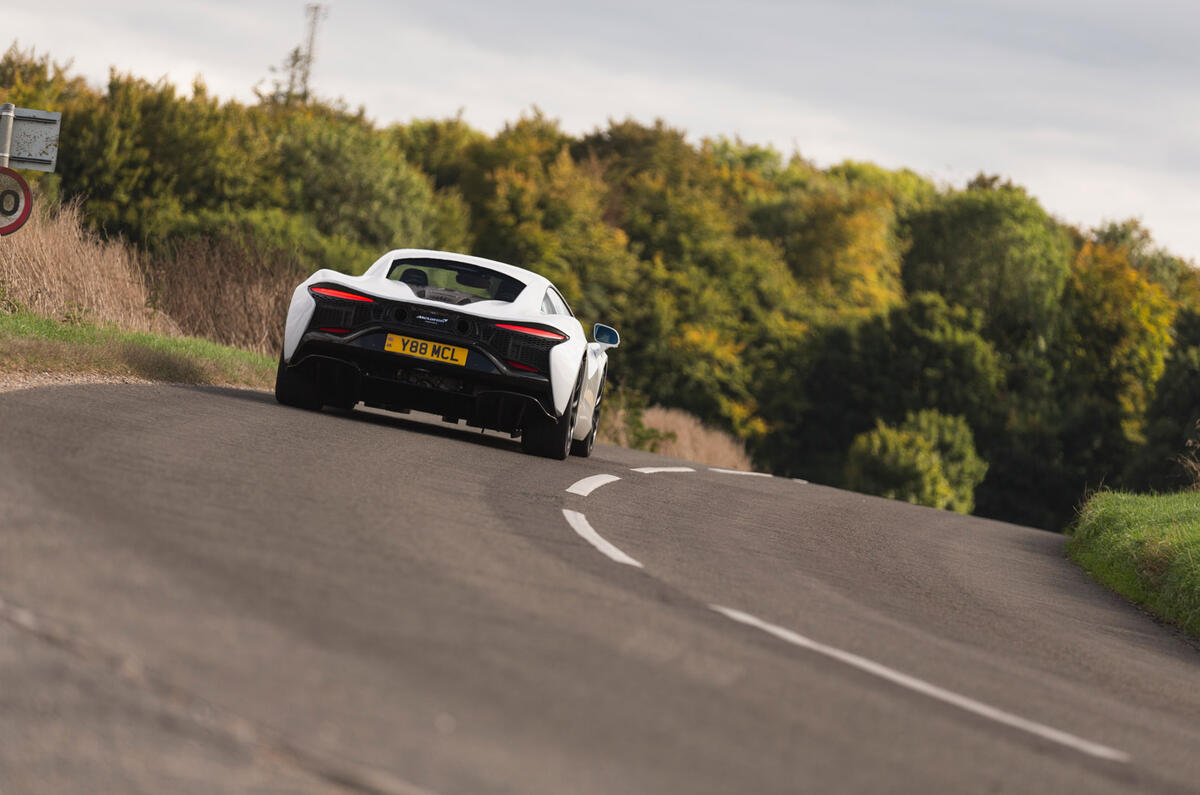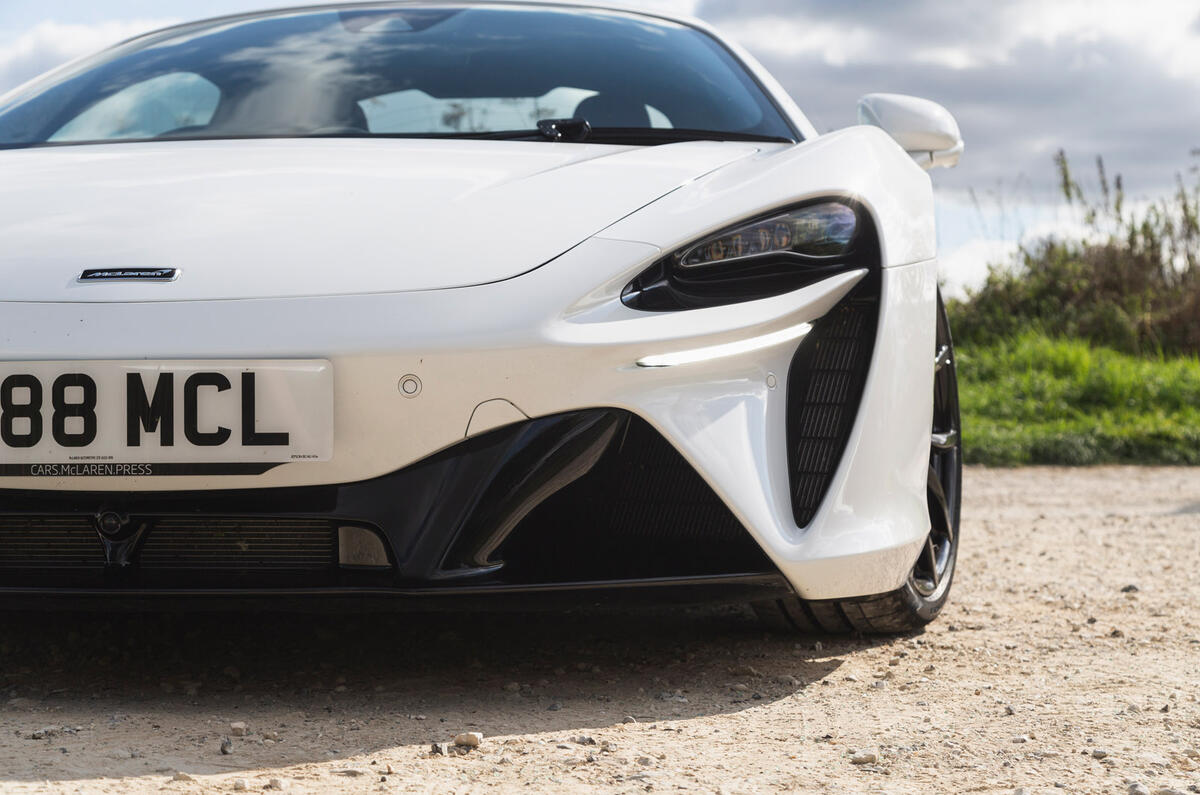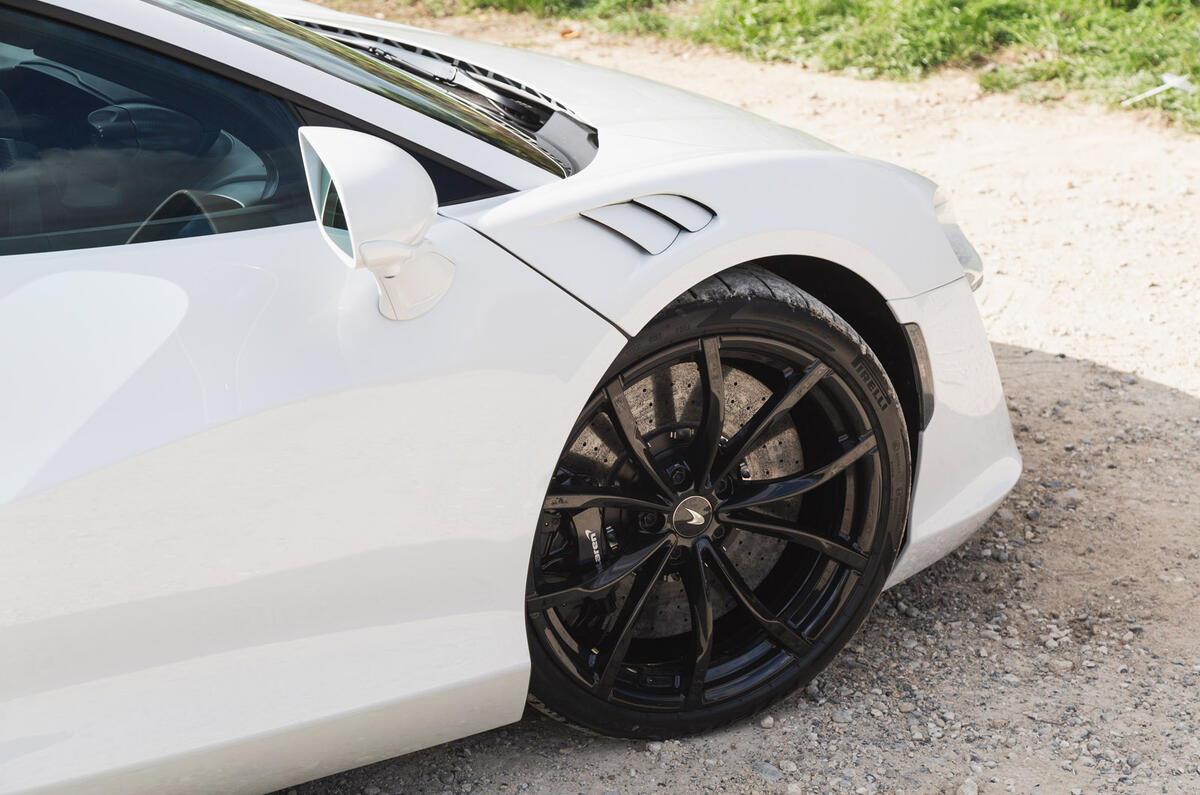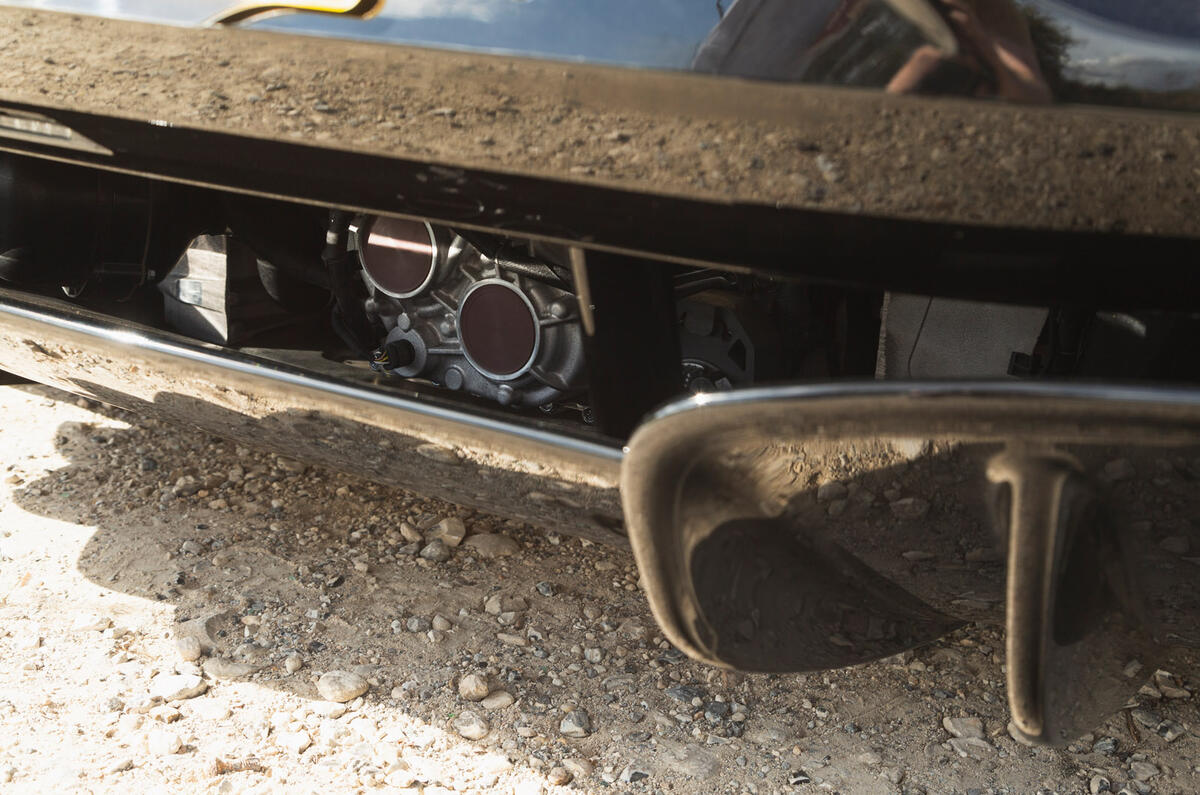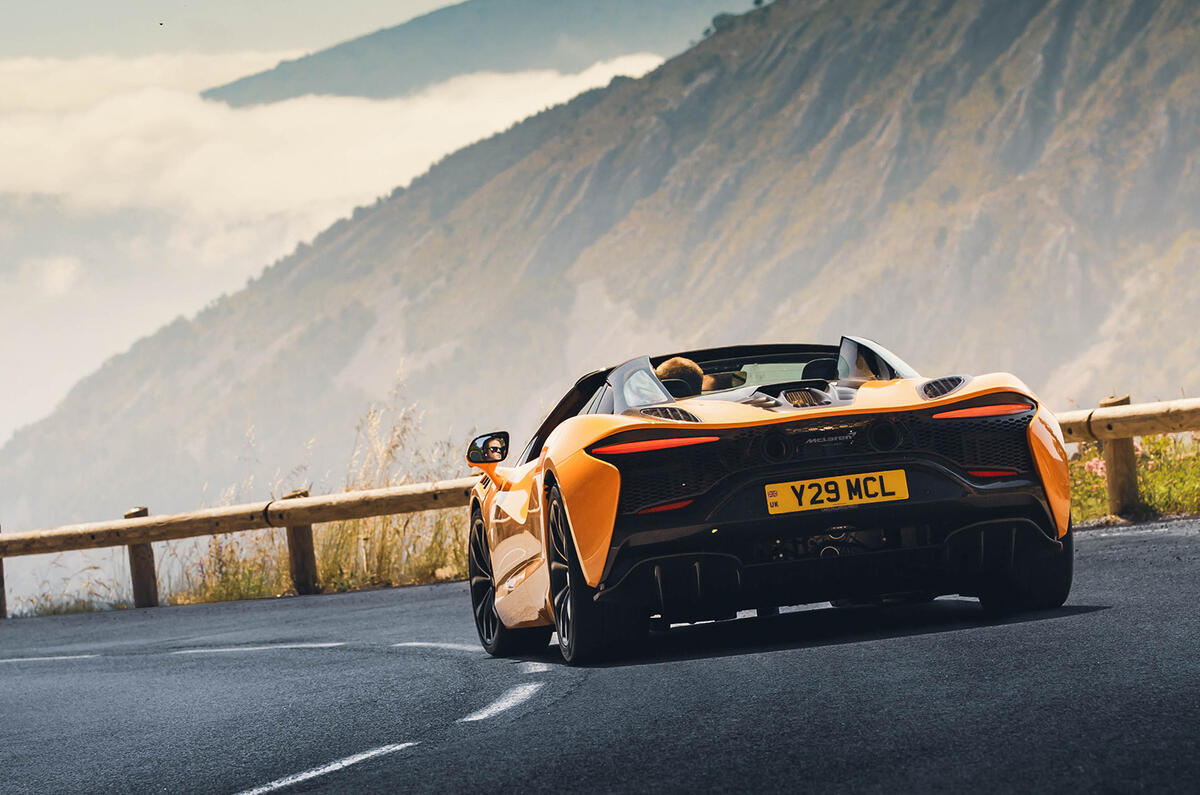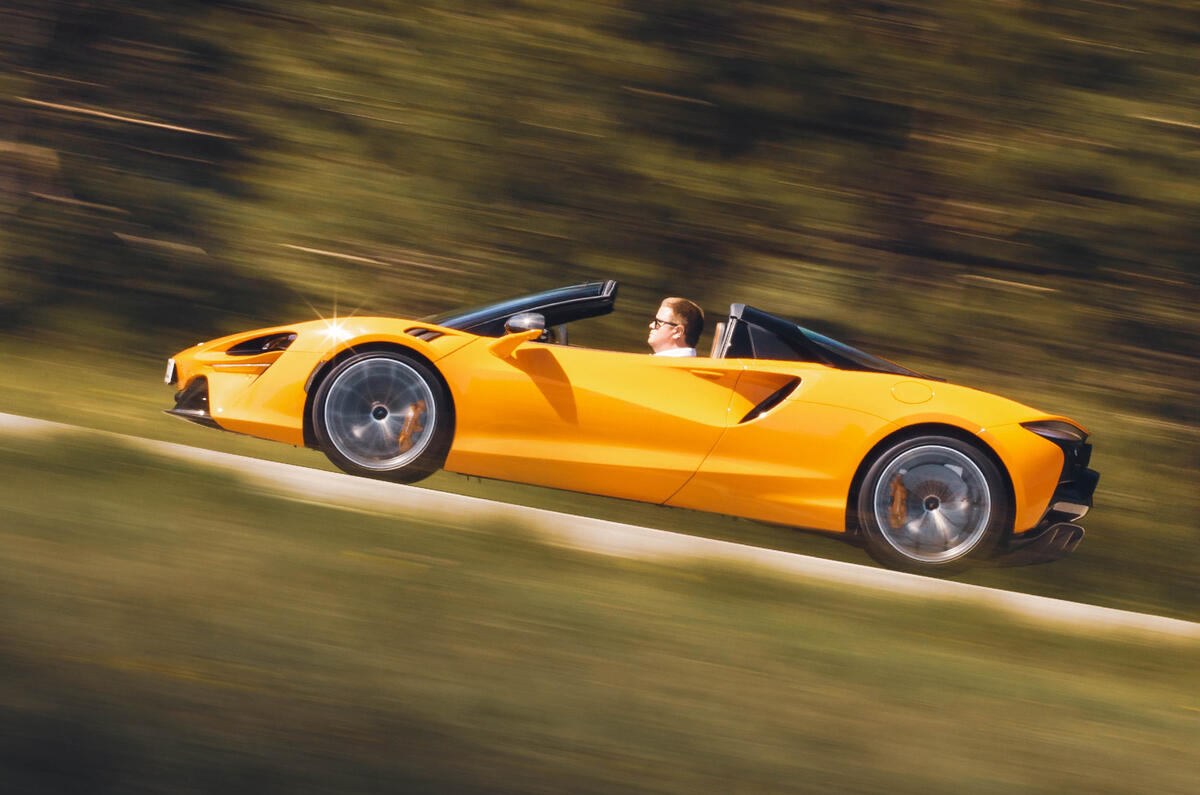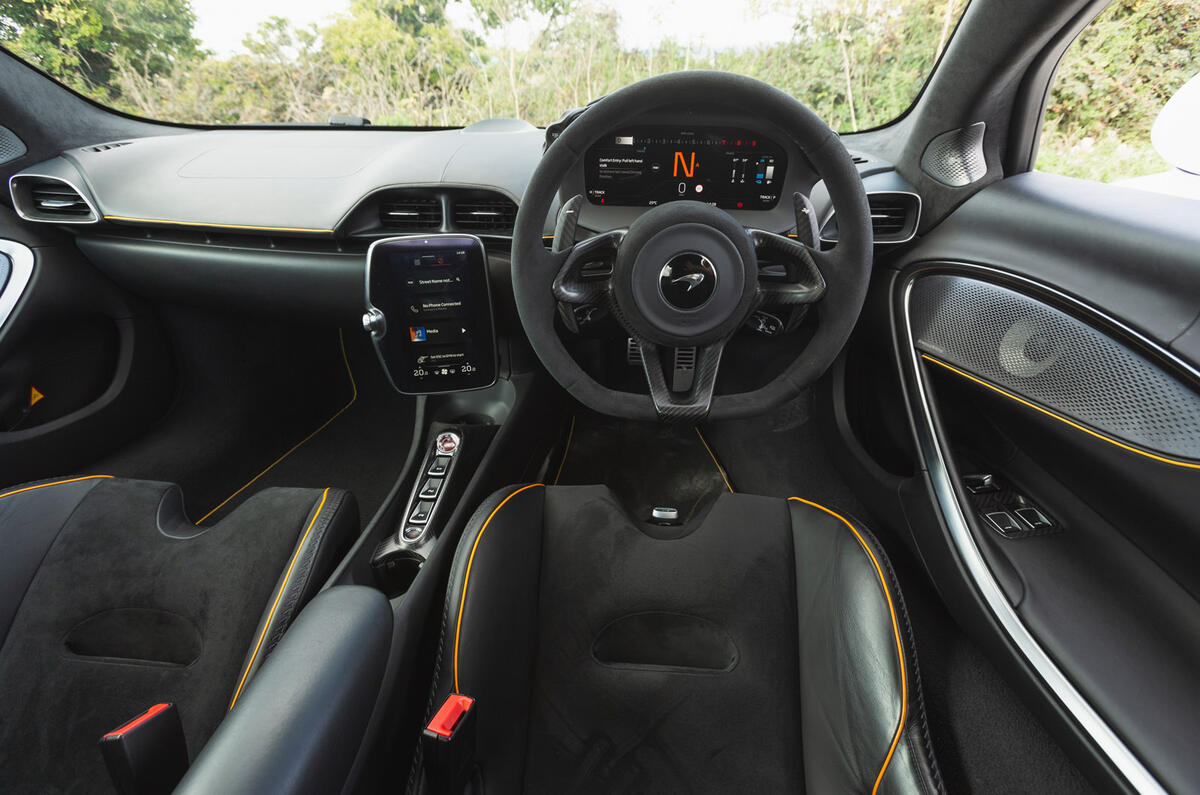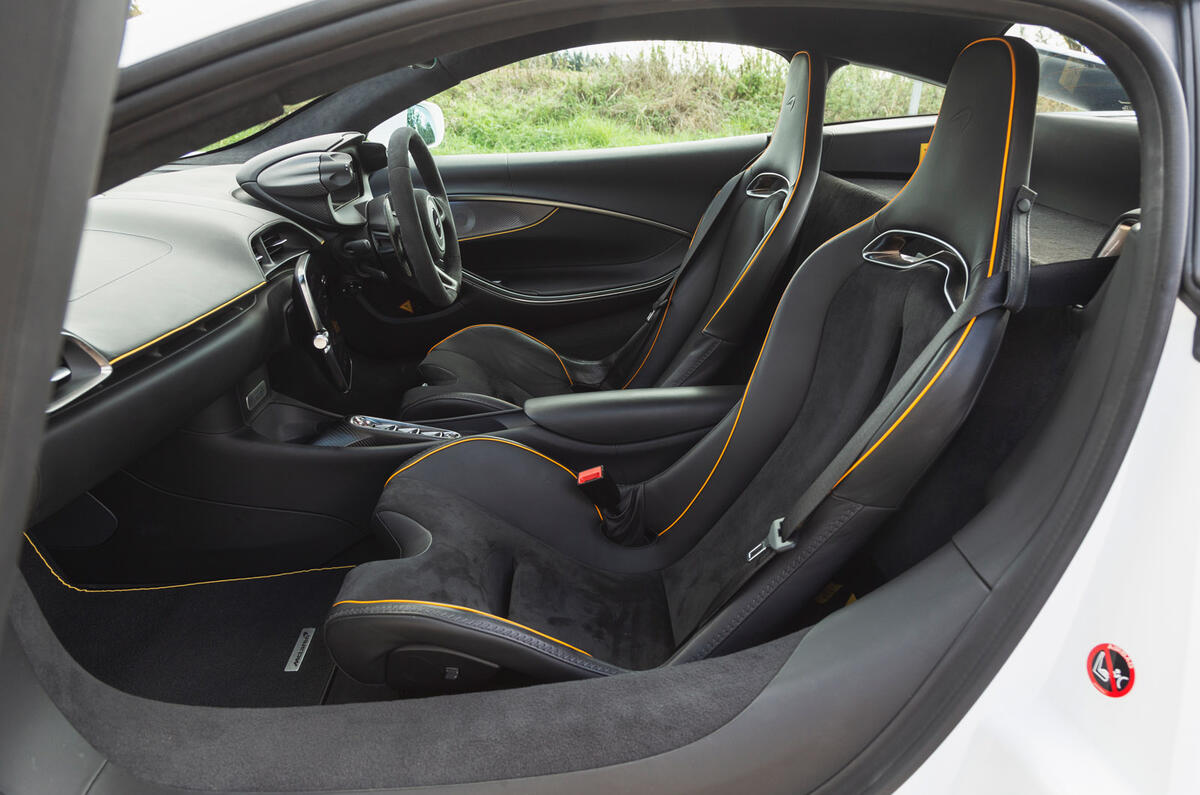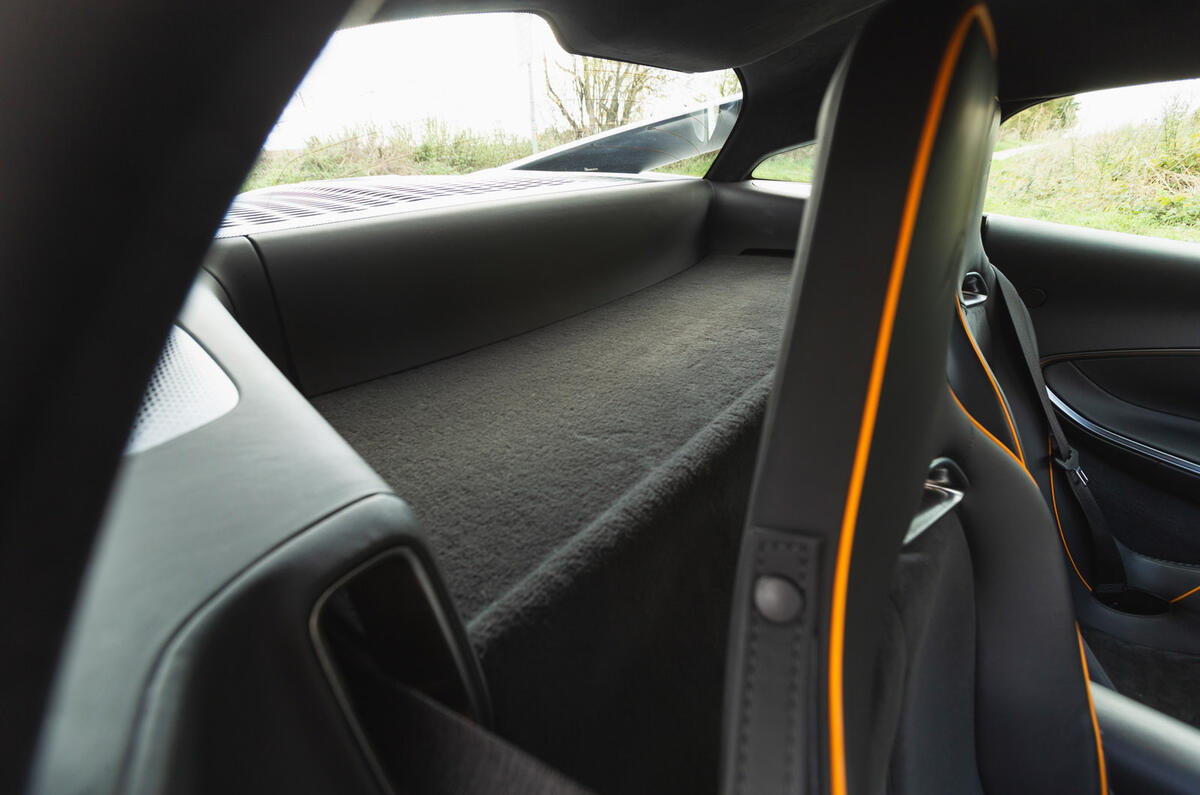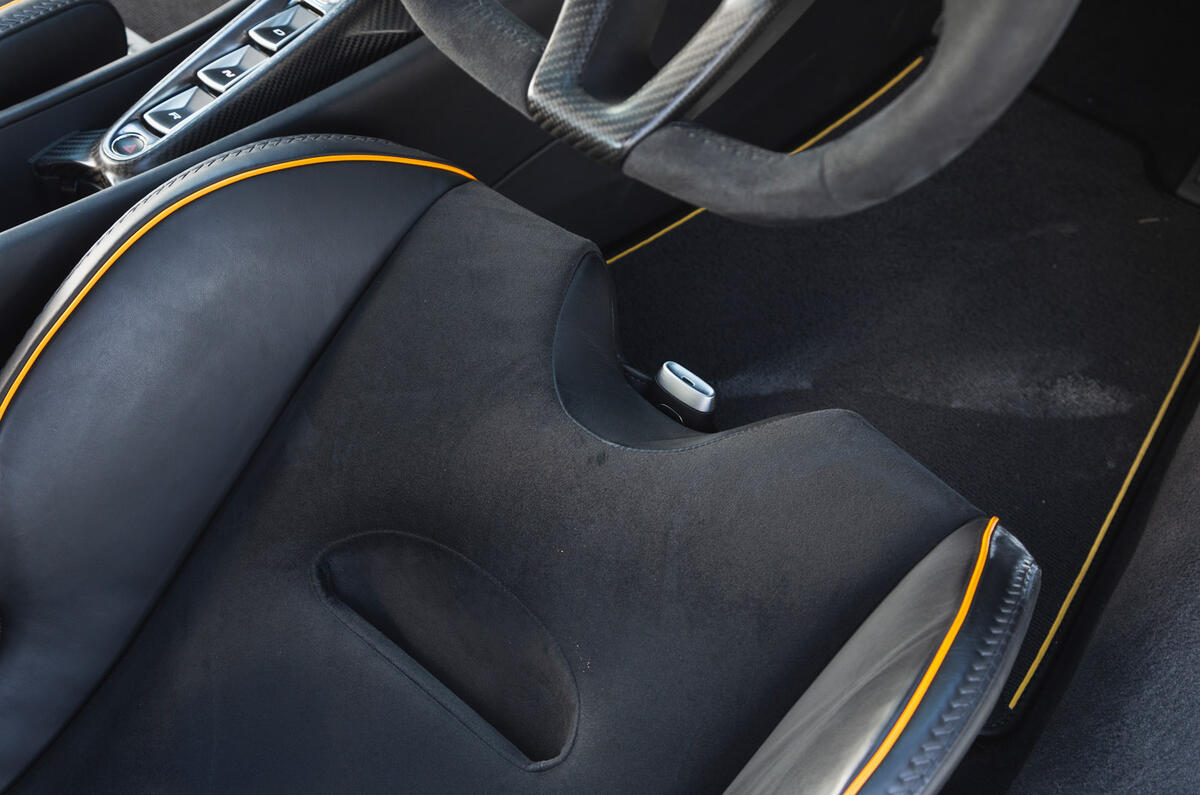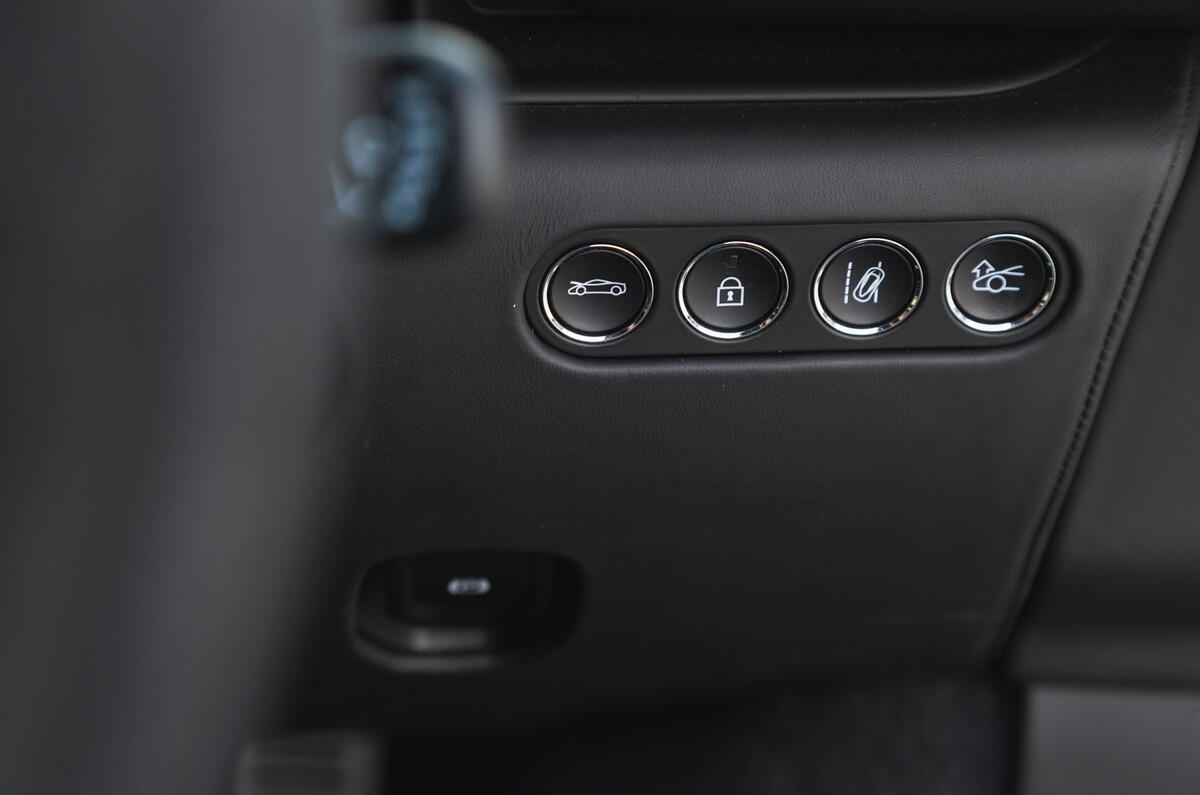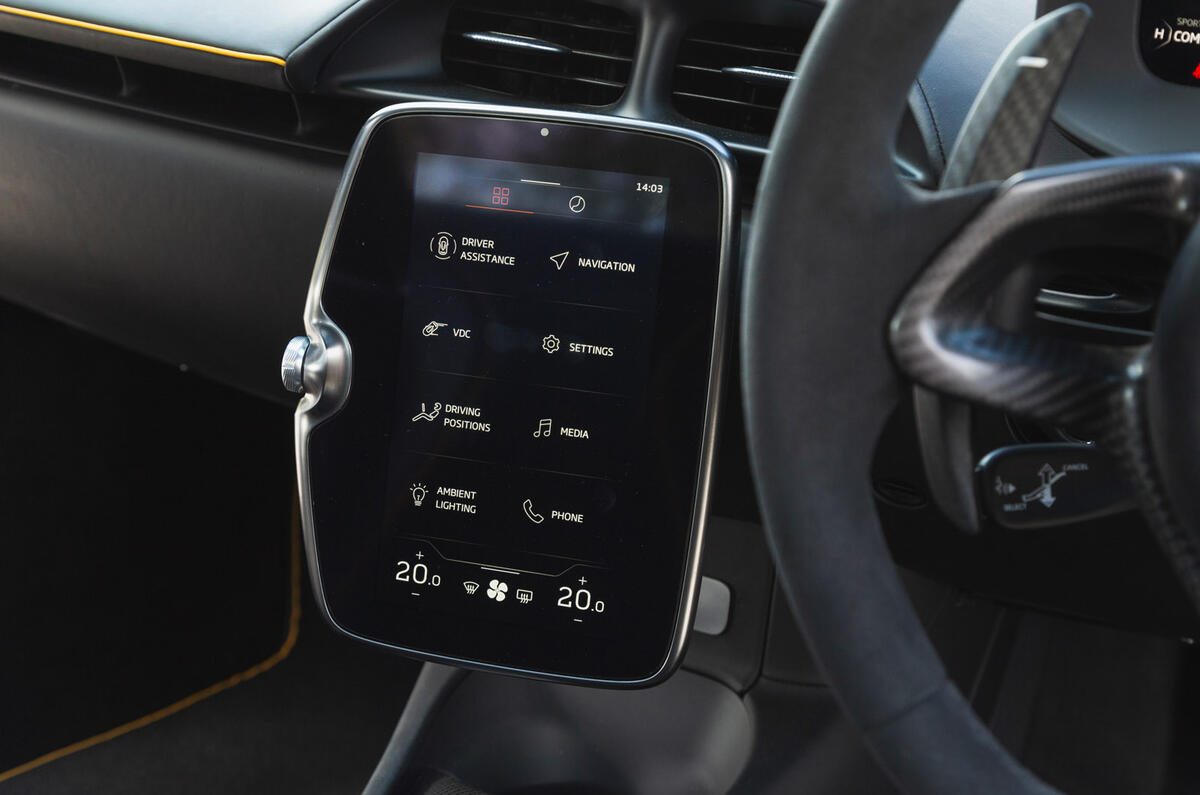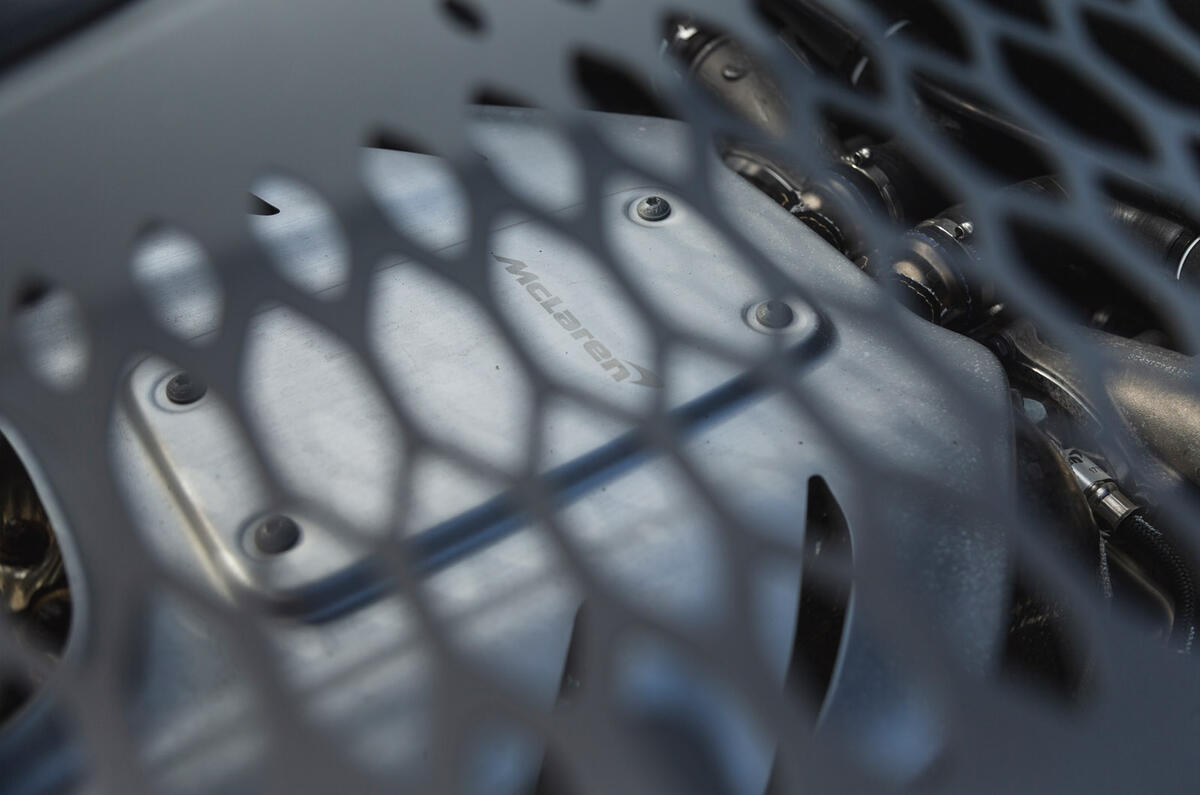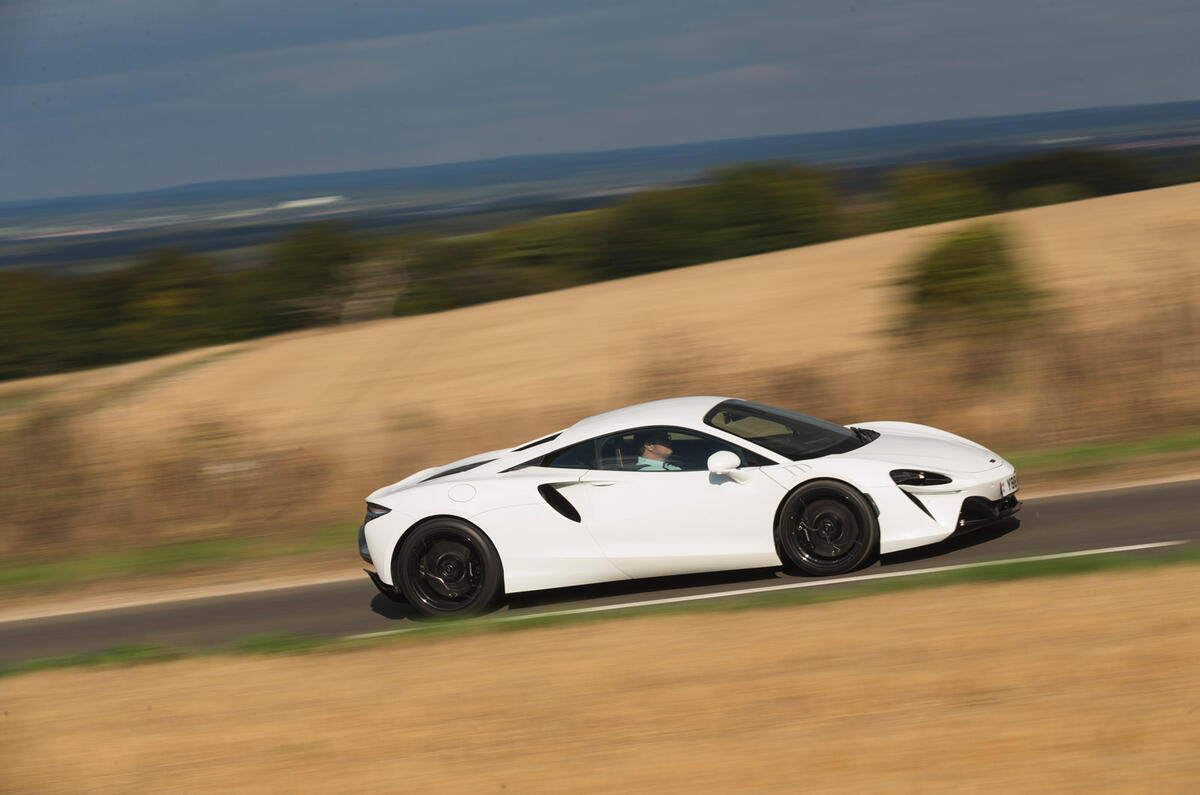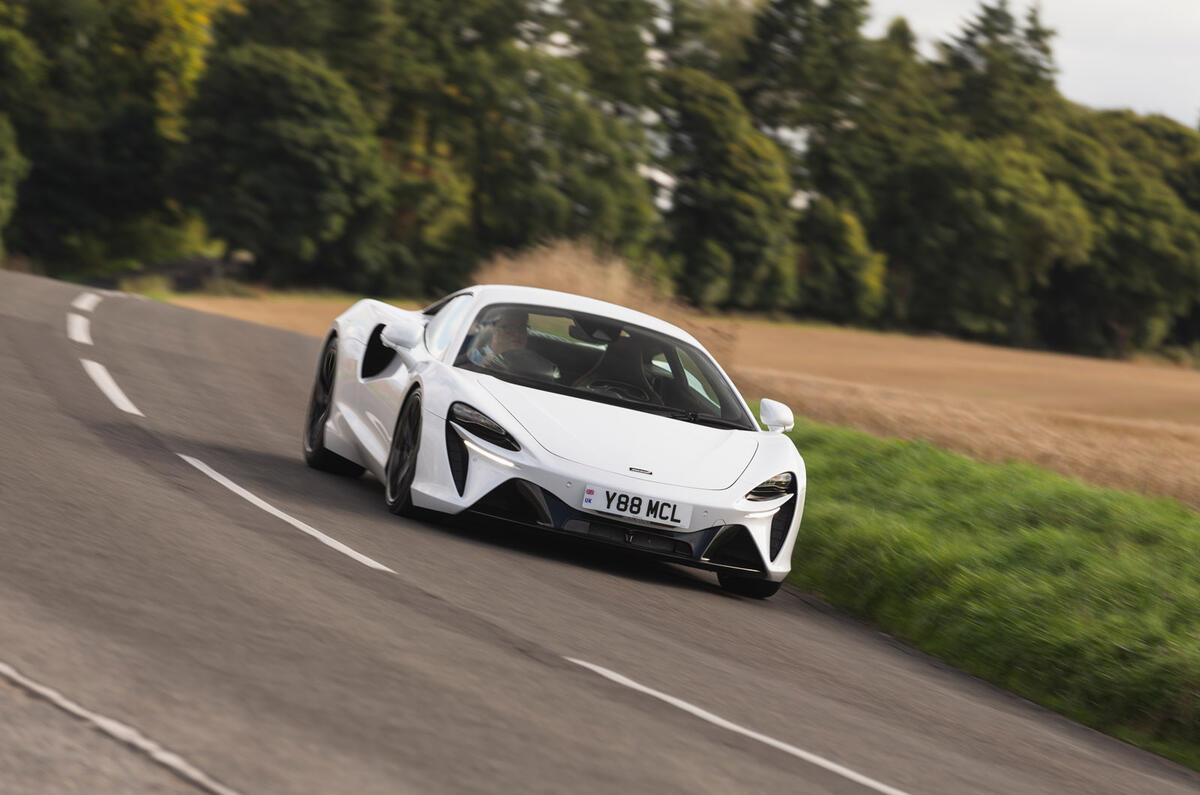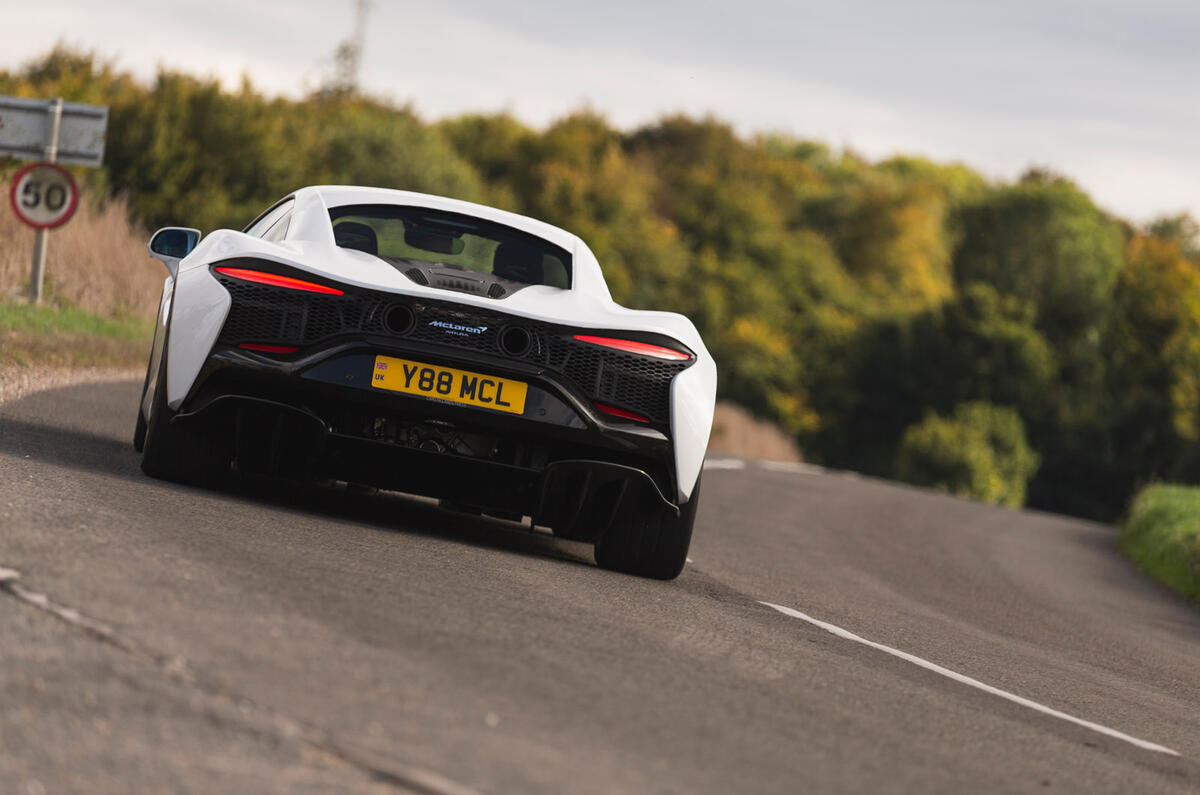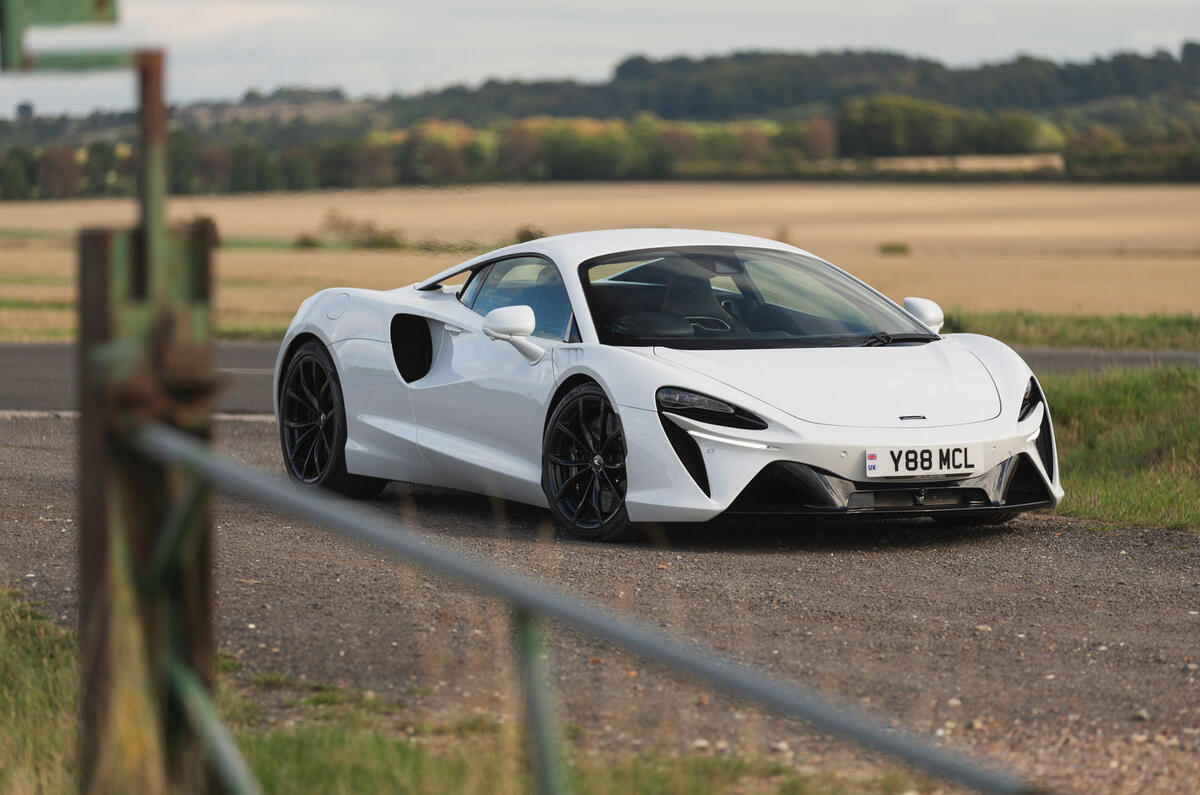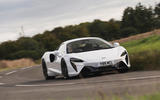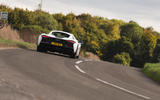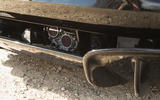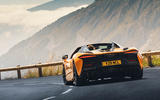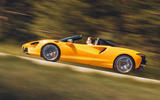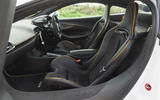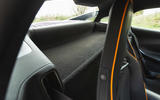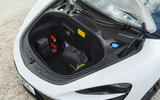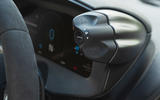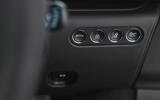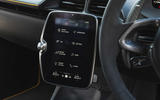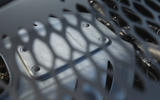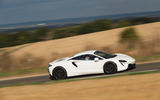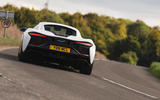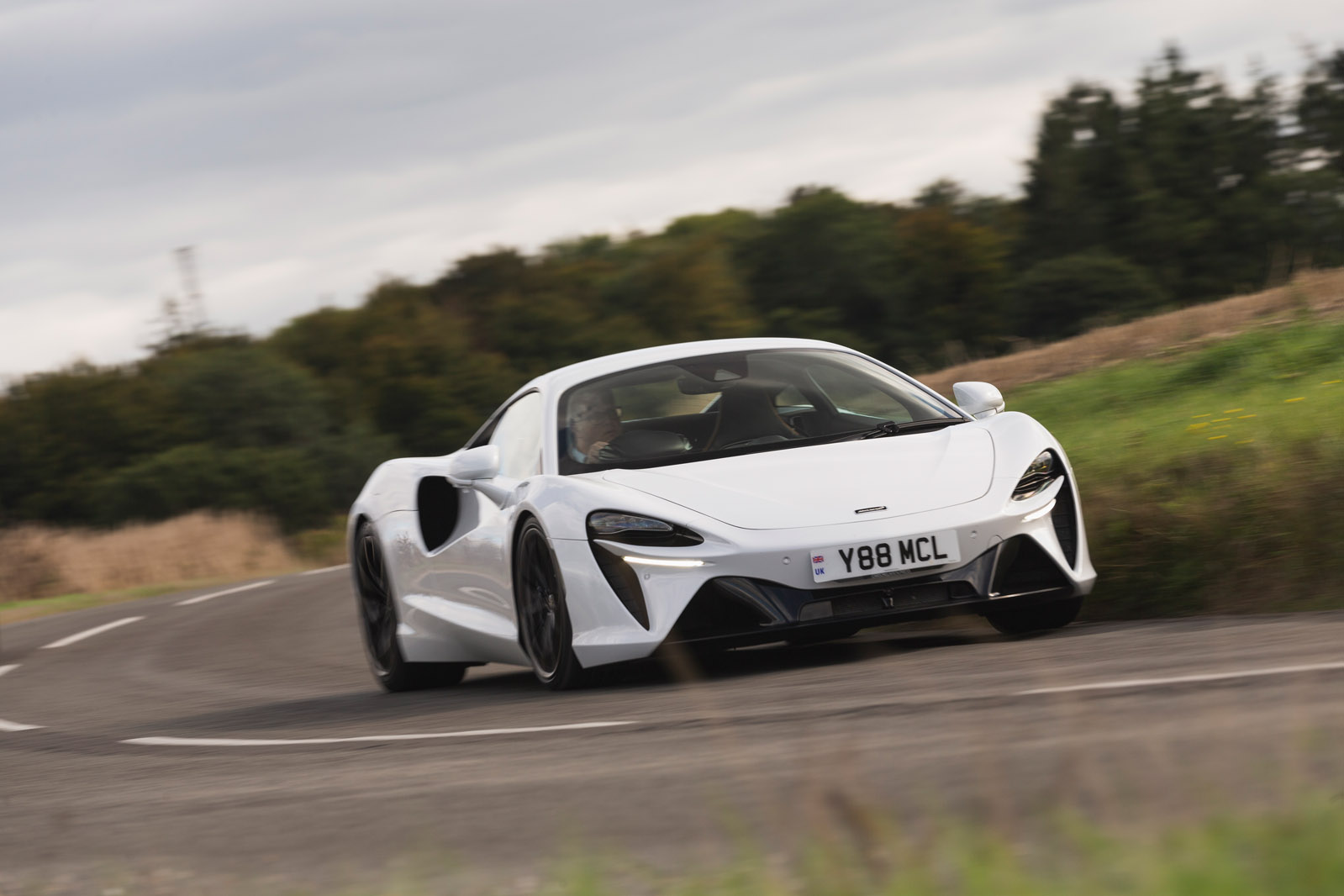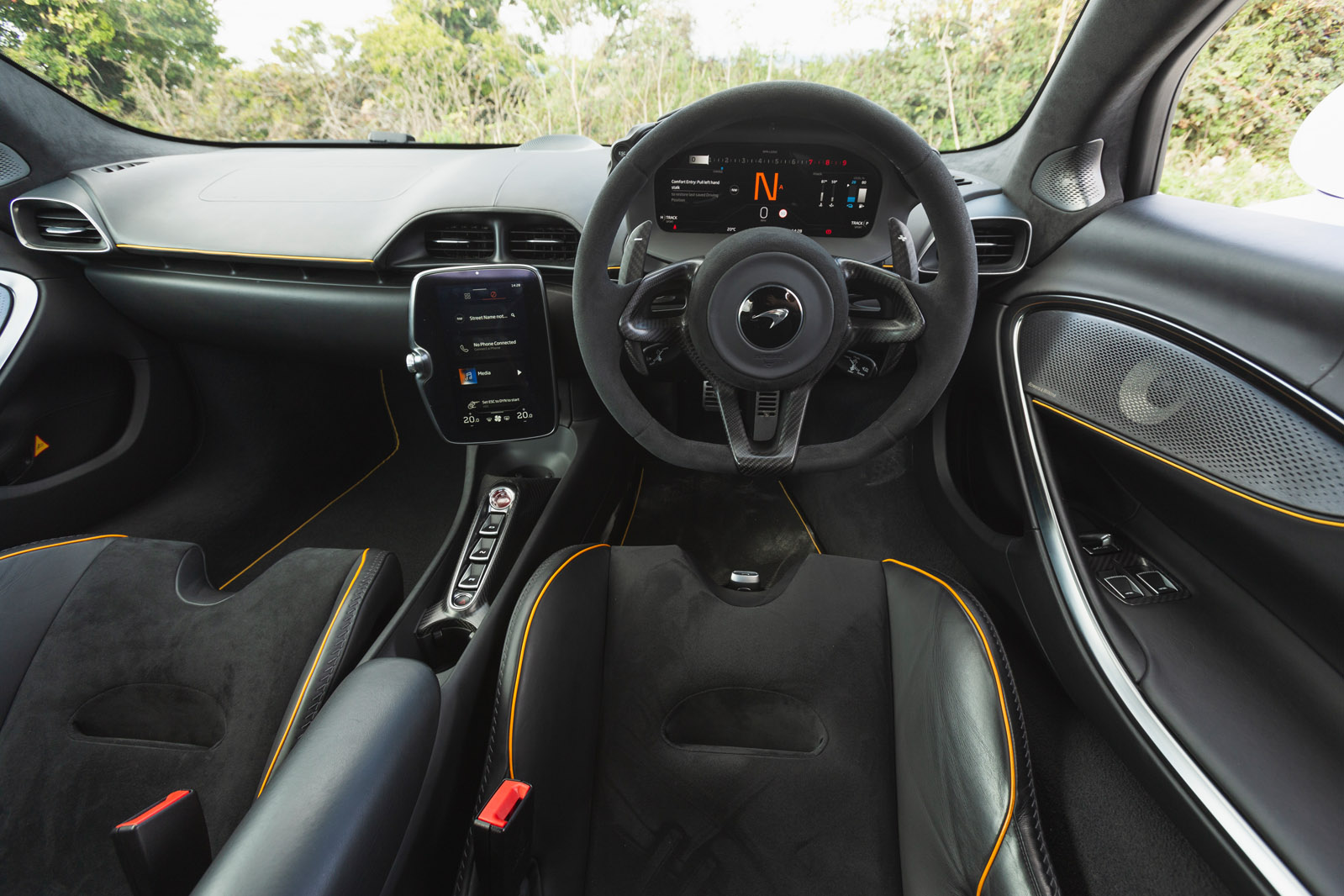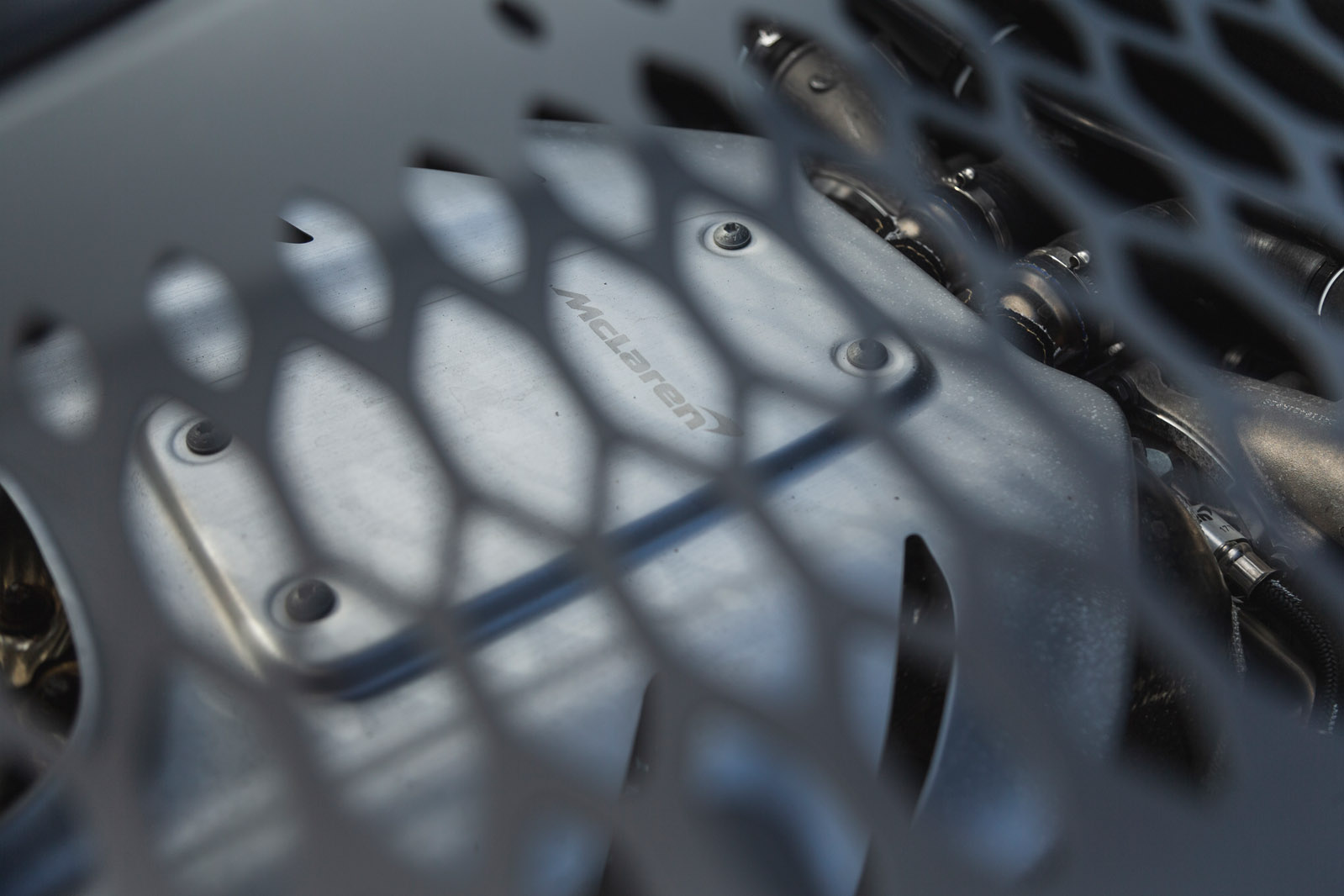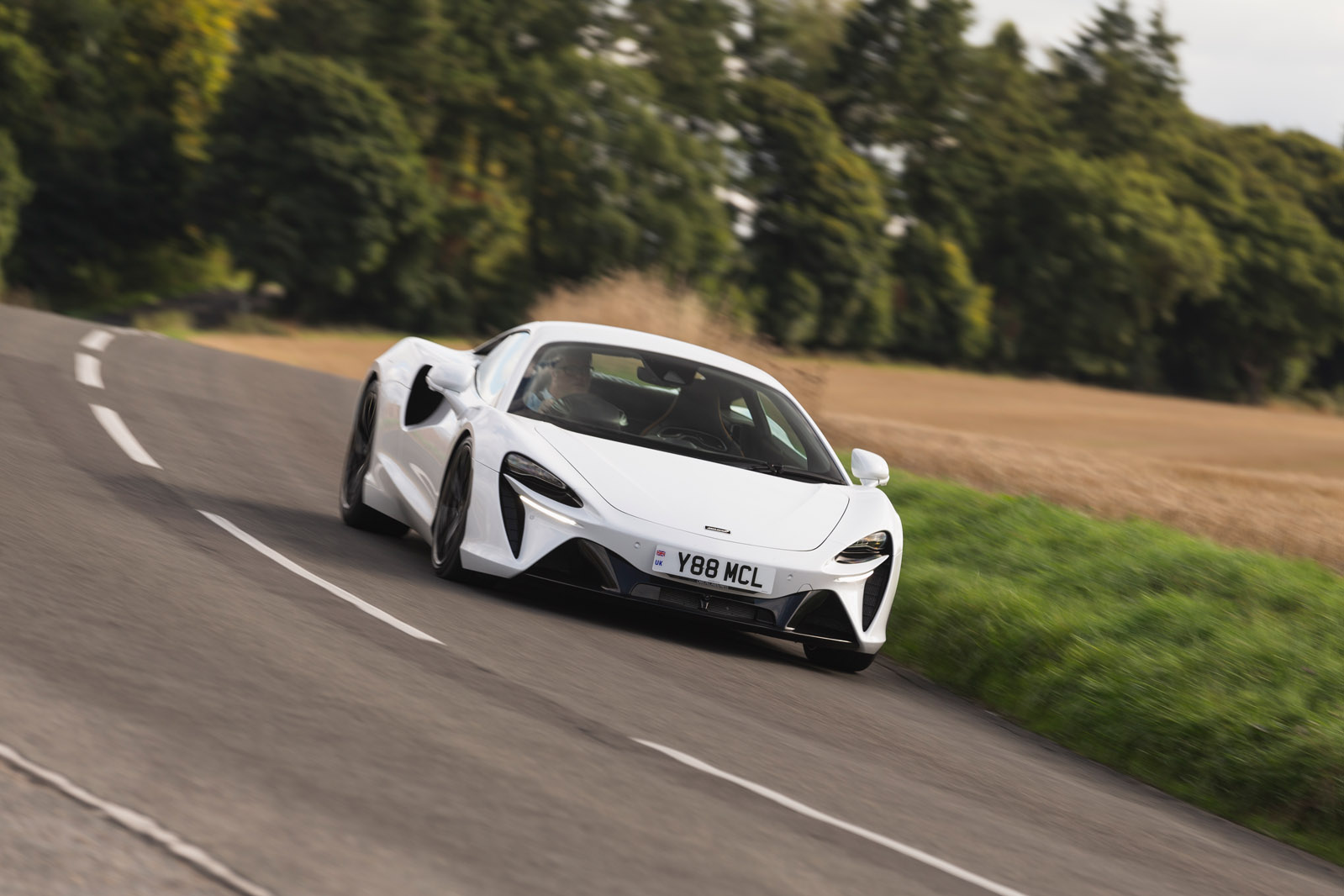The McLaren Artura’s two-seat cabin is predictably snug, but it’s not at all tight or restrictive. The design the standard Clubsport seats (a more conventional comfort seat is available as an option) granted a fine and straight driving position, with its clever elliptical hinge allowing you to explore a wide range of variously recumbent driving positions, and granting useful room even for taller testers to wear a helmet.
Once comfortable, you will notice how thoughtfully McLaren has refined and enhanced its philosophy on cabin layout, and how cleverly it has created useful storage space. There’s no glovebox, but there are large door pockets at the front of the door consoles, which are designed to retain their contents as the doors themselves pivot and swing away upwards – and they do so very effectively.
There’s also real space efficiency about the design of the car’s super-slim centre console. It’s just wide enough to make room for two cupholders and an armrest cubby big enough for a wallet or small purse, but it also has deepish storage channels on either side of the transmission controls where a smartphone will happily sit and stay put when you’re touring, if the other nearby storage areas are occupied.
The car’s instrument screen is all-digital and all-new. In contrast to the one on the McLaren 720S, it is mounted directly onto the steering column rather than the fascia behind, so it moves with the wheel as you adjust the latter for your ideal driving position and – in theory – remains unobstructed by it. In practice, our taller testers found the column a bit short on upwards rake adjustment range, leaving the top 10mm of the screen itself obscured by the rim of the steering wheel.
McLaren’s clever one-piece gearshift paddle survives. Above it, new toggle controls for its adaptive powertrain and chassis modes sit on the upper edge of the instrument binnacle. These are easy to spot without taking your eyes far from the road and prod with a finger outstretched from the steering rim.
In the case of the Spider version, the roof mechanism takes the space there might have been behind the seats for carrying smaller bags. Powered by electric motors, it needs only eleven seconds to cycle from fully open to closed, and can operate at speeds of up to 30mph.
The Spider also enjoys similar great all-quarter visibility as the coupe. The view forwards and to the sides is excellent. To the rear, the car adopts the glazed flying buttresses also seen on the 720S Spider, which fulfill their aerodynamic purpose without obstructing your over-shoulder rearwards view any more than is necessary.
Multimedia system
The Artura’s advanced electrical architecture means it features a new-generation infotainment system called MIS II. It’s not the biggest or flashiest system, with an 8.0in portrait-oriented screen that is designed to be space-efficient and lightweight. But it has plenty of evident processing power, good responsiveness and reasonable navigability, thanks in no small part to the physical home button-cum-scroll wheel on its left-hand side. We would still prefer to have physical HVAC controls.
The factory navigation system remains a bit unintuitive to program, with some odd layout and usability foibles. It is easy to follow once set, however, and can relay mapping onto the digital instrument screen; although it does seem to lack a more traditional 'north up' guidance display mode.
Apple CarPlay is offered as standard via either a wired or wireless connection; and McLaren has added a wireless charging pouch for the car, which grips your device very firmly, so that it doesn't become loose and fly around the cabin during quicker driving.
Our car had McLaren’s Bowers & Wilkins 12-speaker premium audio system, which had plenty of power and good clarity.




